The Commercial Coffee Maker Guide 2025
Commercial Coffee Brewer Buyer's Guide
Understanding Brew-to-Serve System Types
Commercial coffee brewing isn't about making better coffee than residential machines—it's about operational efficiency, volume capacity, and serving flexibility. The equipment categories reflect different business models and customer flow patterns. Choosing the wrong system type costs more in lost revenue and operational friction than any auction savings deliver.
Direct-to-Pot with Warming System
The classic diner model: brew tower feeds glass or stainless decanters that sit on heated warming plates. This system prioritizes fresh coffee visibility and rapid turnover. Customers see the pot, staff can gauge volume at a glance, and refills happen quickly. The warming plates keep coffee hot but require attention—coffee sitting on heat for more than 20-30 minutes degrades in quality.
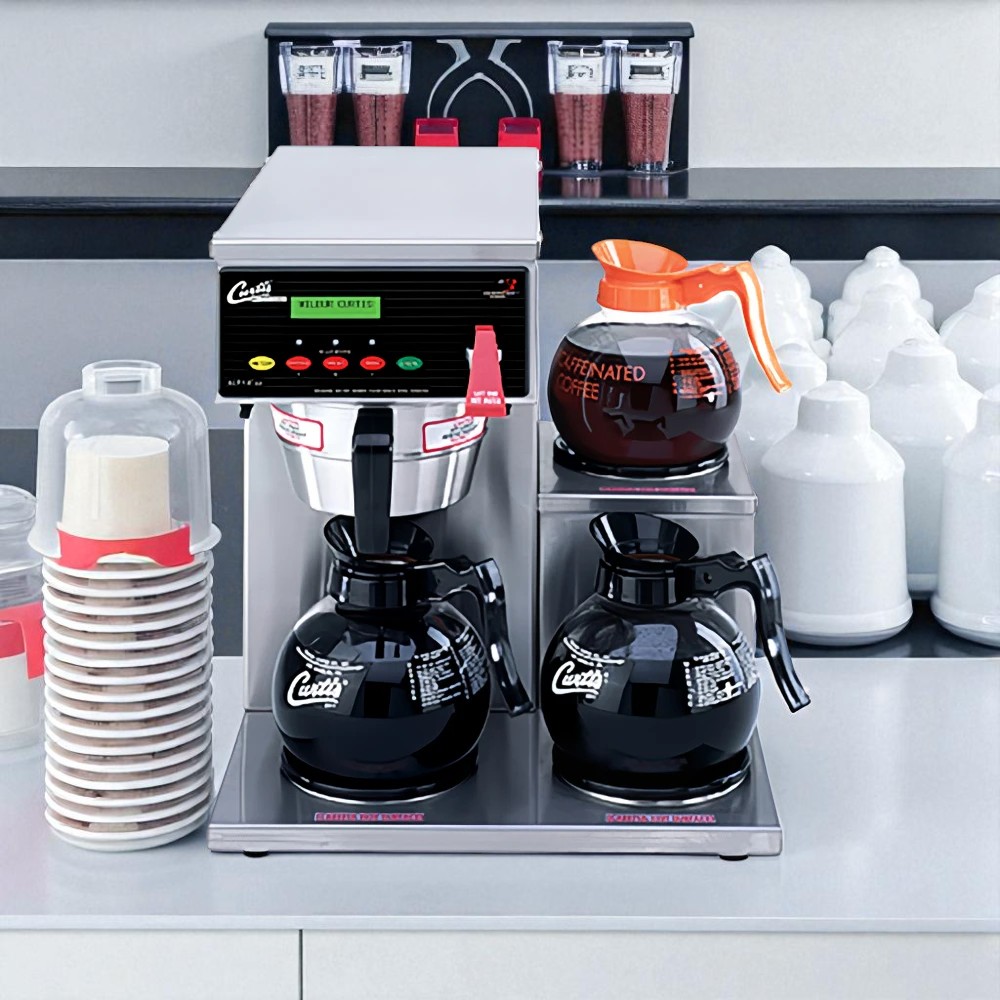
Operational reality: This setup works best where coffee turnover is high and staff can monitor freshness. Diners pride themselves on dumping old coffee and brewing fresh throughout service. The warming plates consume power continuously and represent a burn hazard in high-traffic areas. Equipment cost is moderate, but operational vigilance is required.
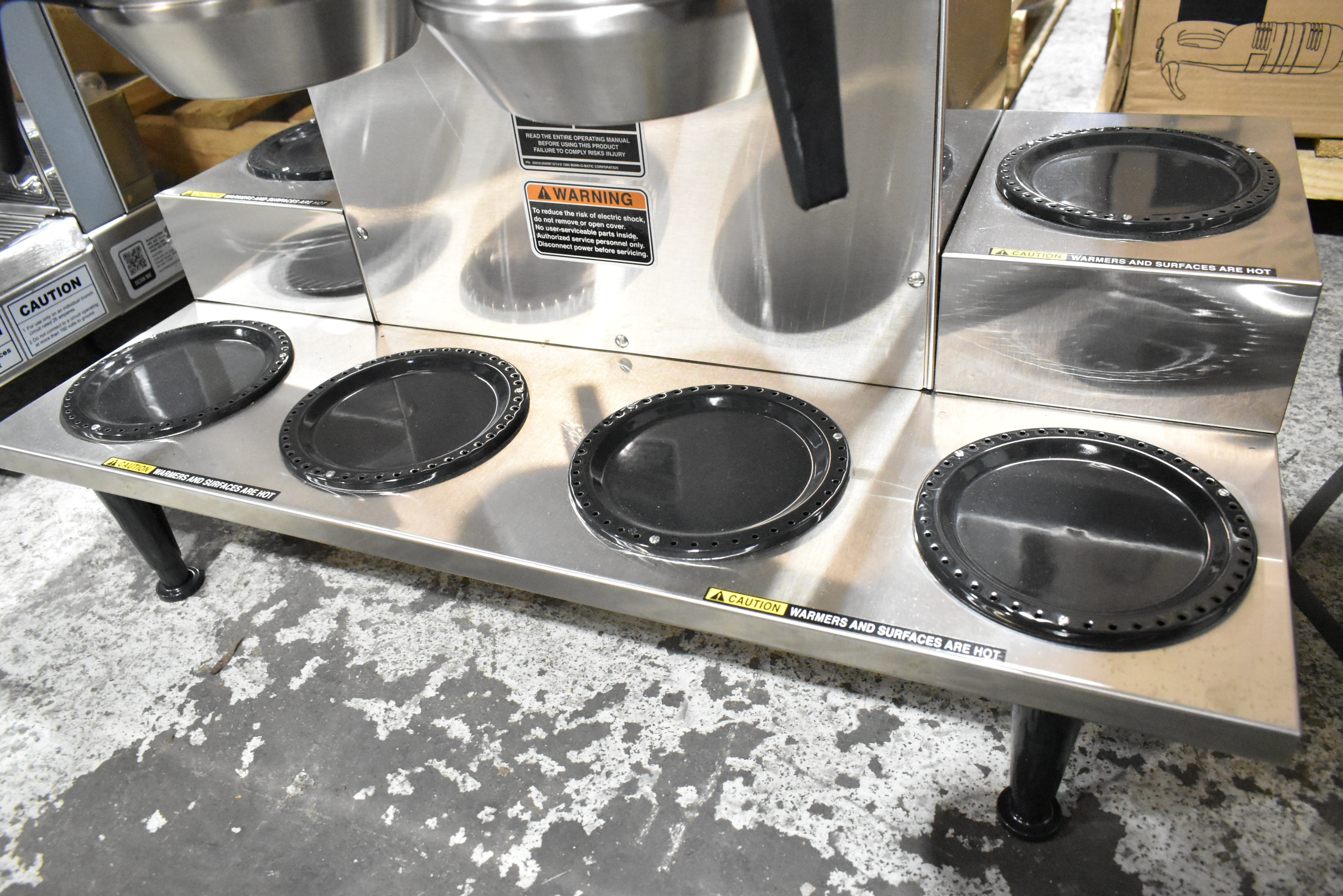
Brew-to-Dispenser Systems
The gas station and convenience store standard: coffee brews directly into insulated dispensers with front-mounted spigots for customer self-service. No warming plates needed because the insulated containers maintain temperature. Coffee stays fresh longer without continuous heat exposure. Multiple dispensers allow variety—regular, decaf, flavored options—without requiring multiple brew towers.
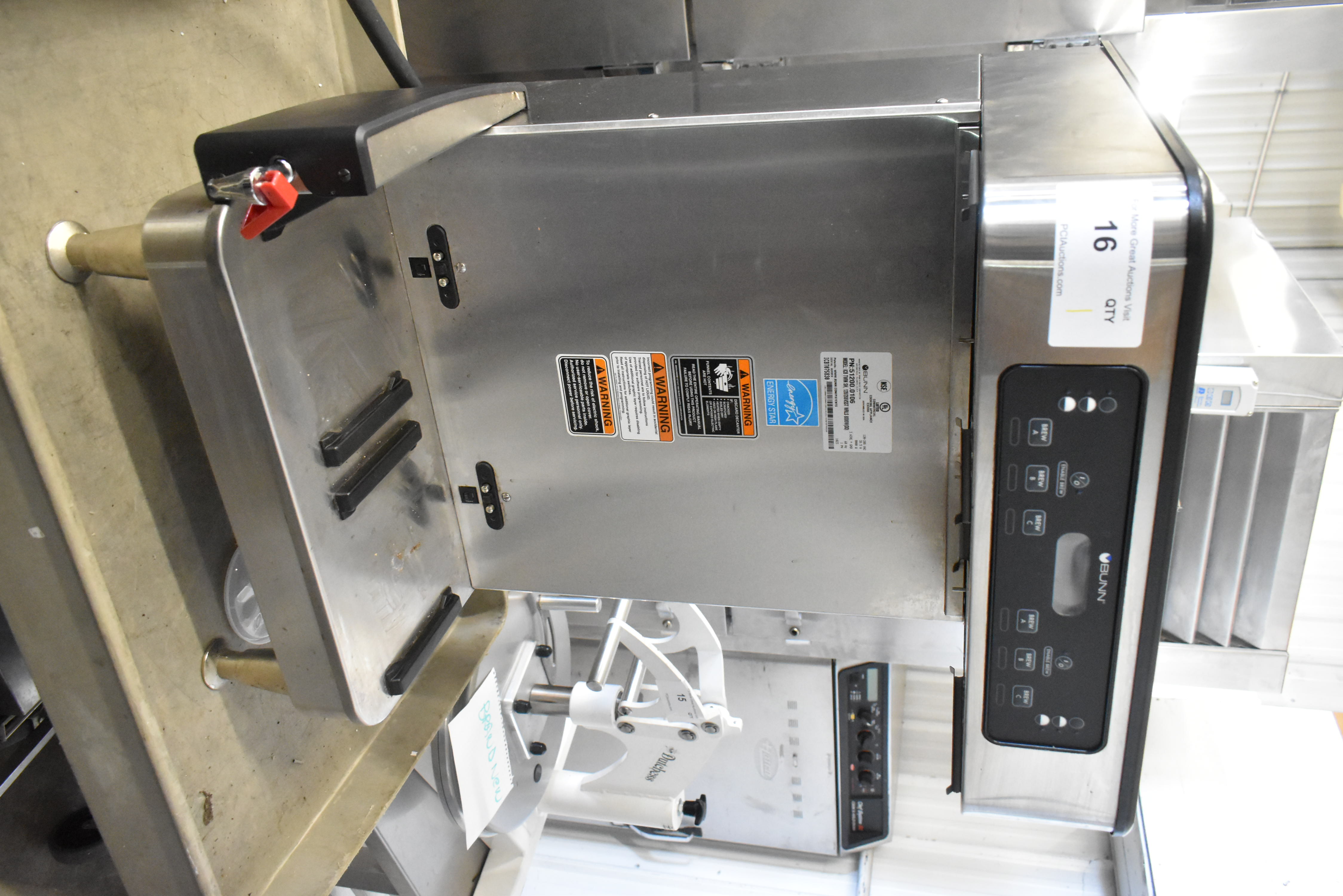
The operational advantage is staff efficiency. One person can brew, swap out empty dispensers for fresh, and maintain multiple coffee types without constant monitoring. Customers serve themselves, reducing counter congestion. The dispensers hold heat for hours, extending viable serving time compared to pot-on-warmer systems.
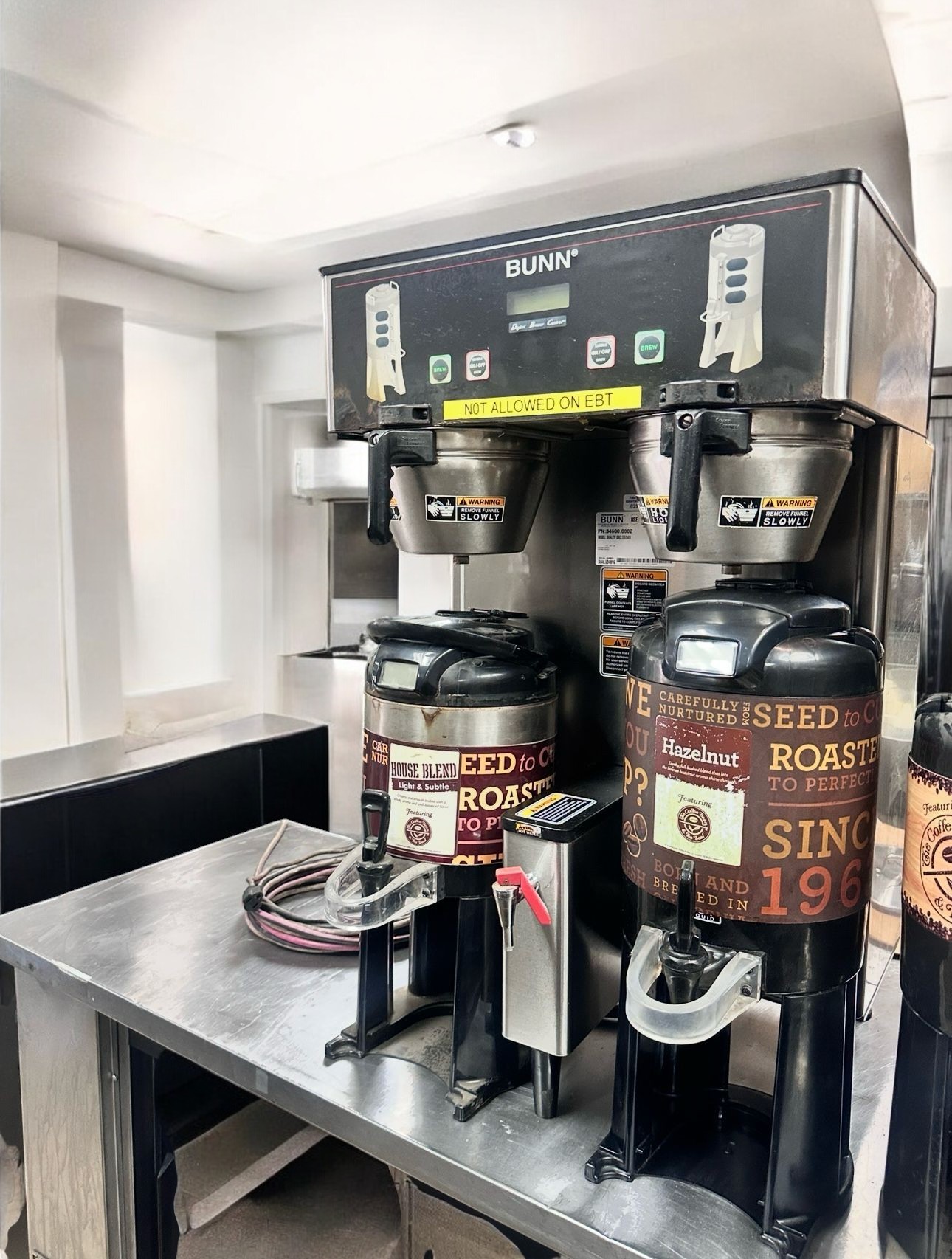
Satellite and Airpot Systems
The portable serving solution: brew tower fills insulated airpots or thermal carafes that are then moved to remote serving locations. Hotels use this for conference rooms and breakfast areas. Offices deploy airpots to different floors. Convenience stores create variety stations without dedicating counter space to multiple brew towers.
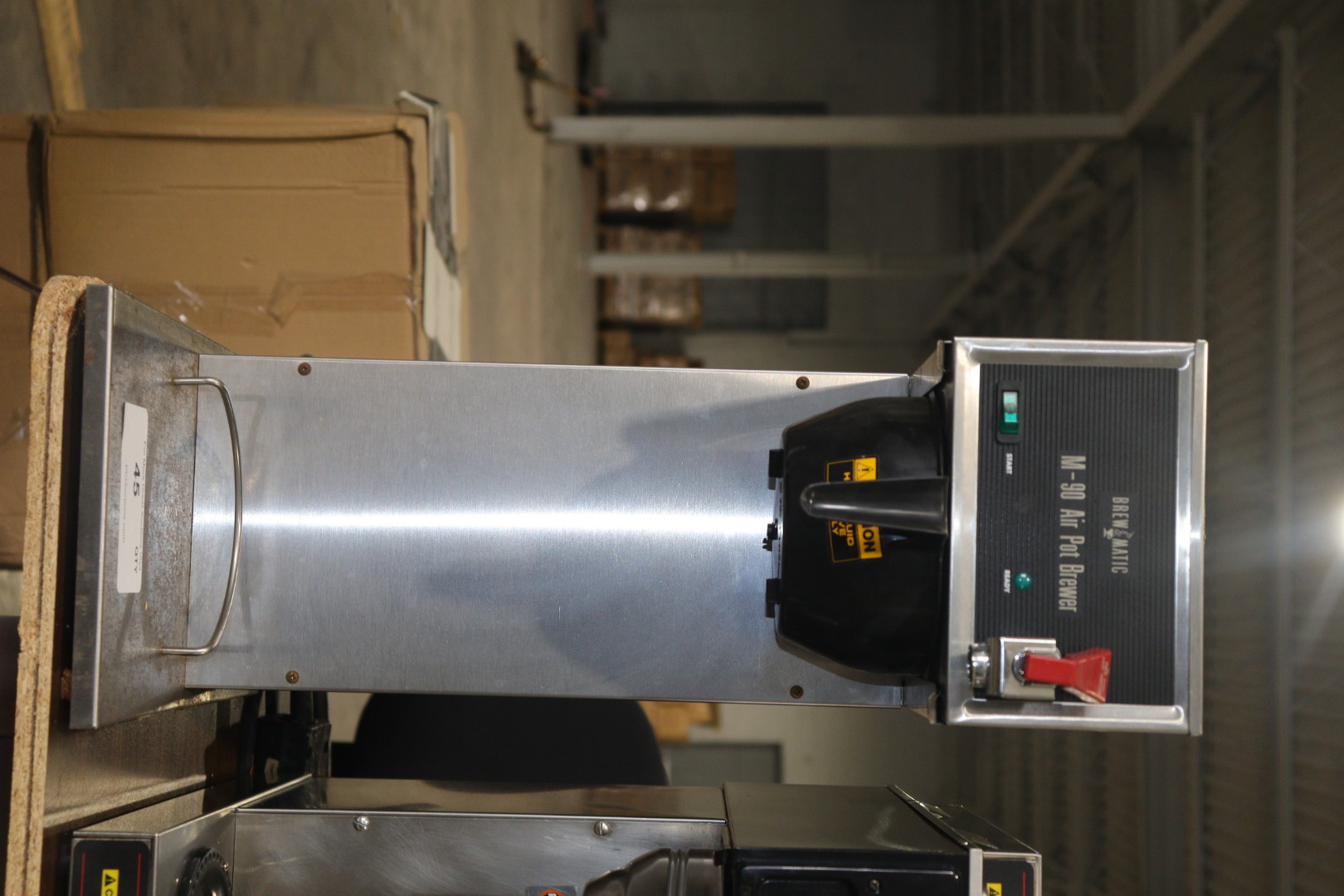
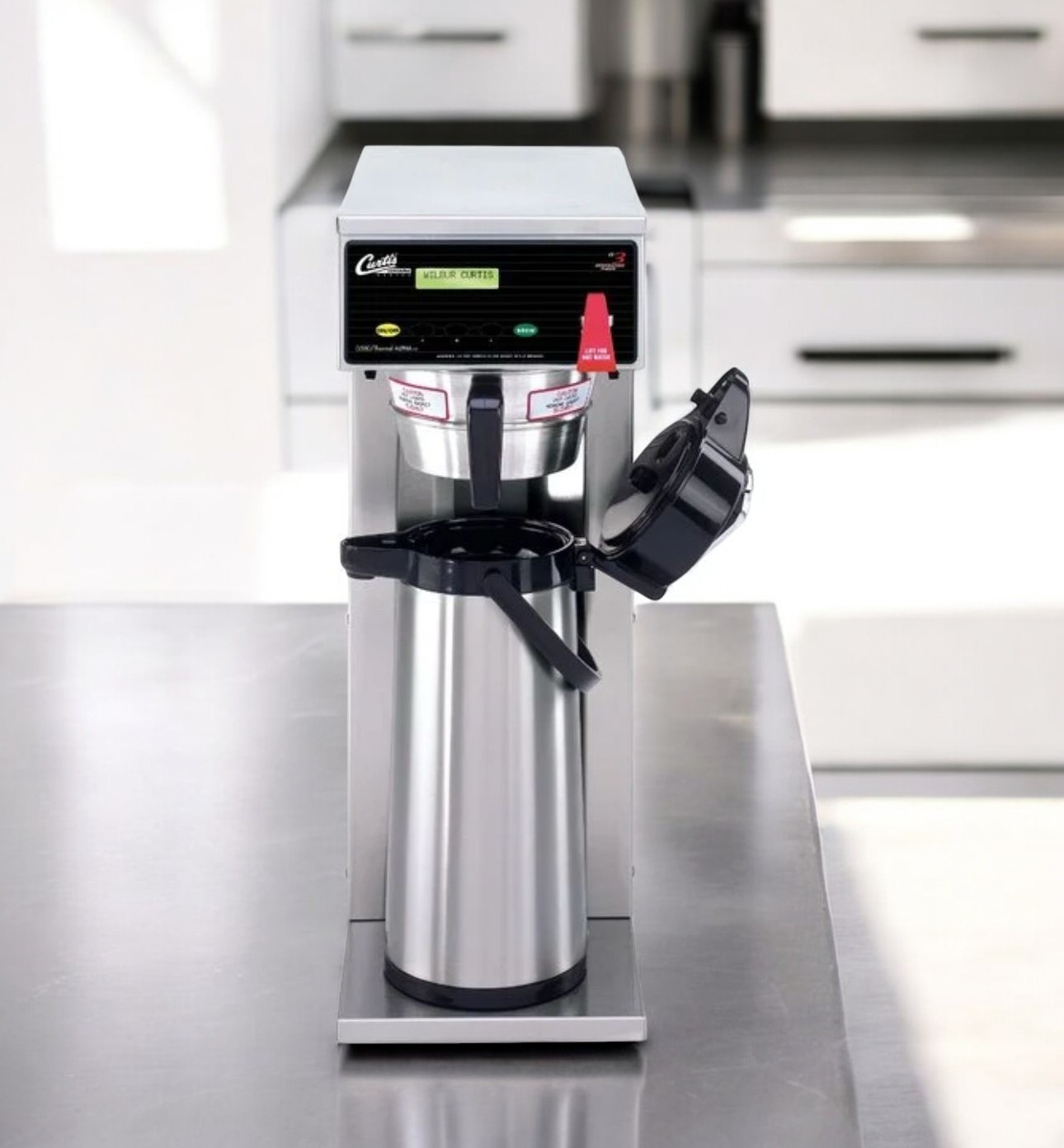
Satellite dispensers work identically but use larger insulated containers with built-in spigots rather than pump-top airpots. The brewing happens centrally, the serving happens wherever needed. This system minimizes equipment footprint while maximizing serving flexibility. Multiple airpots can be brewing, in service, or being cleaned simultaneously—operational redundancy built in.
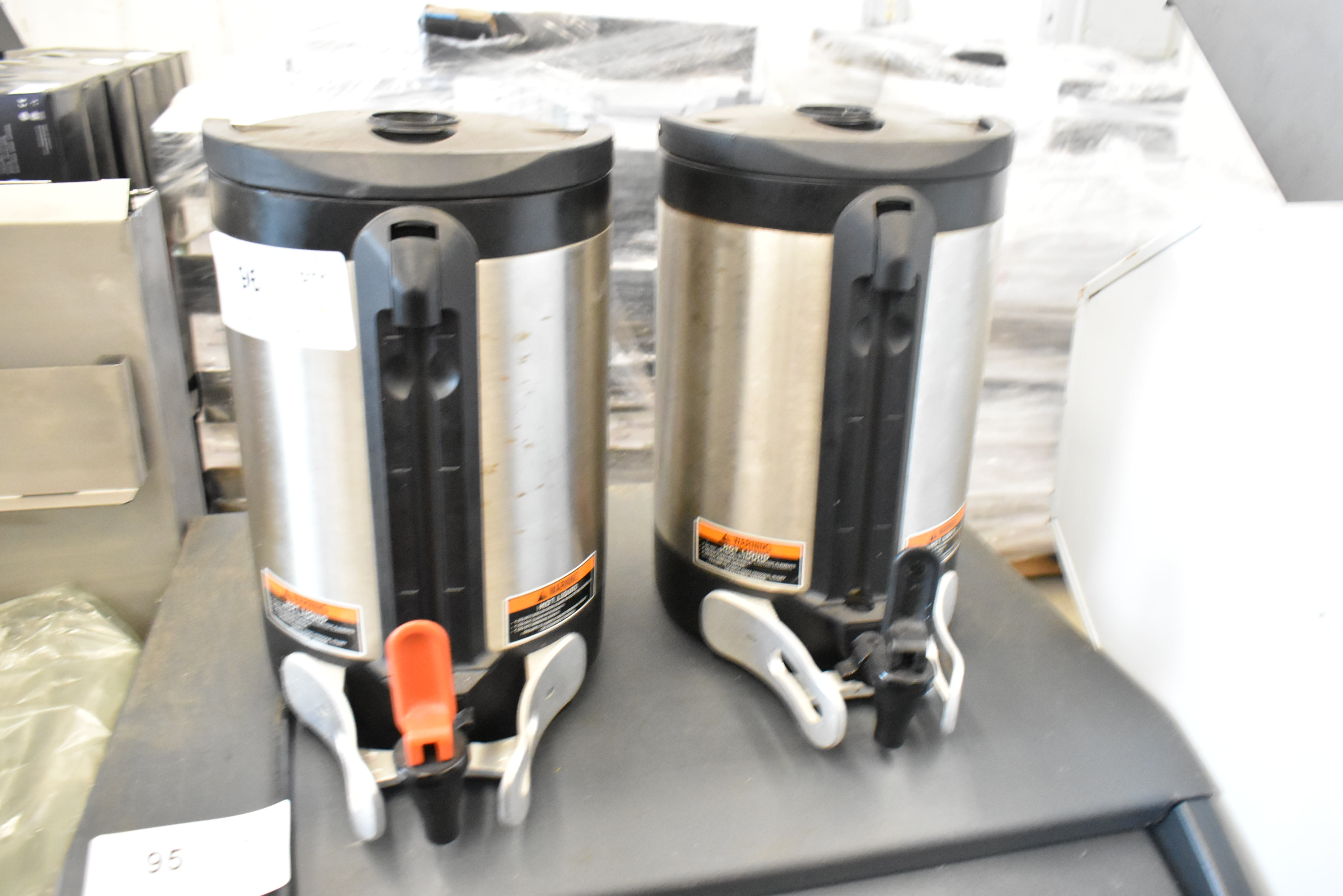
Capacity Planning: Matching Volume to Equipment
Capacity planning requires understanding batch size versus serving volume versus turnover rate. A 3-gallon dispenser seems enormous compared to a single-pot brewer, but if you're serving 200 customers during morning rush, that 3-gallon unit needs refilling multiple times. The math isn't complicated, but getting it wrong creates operational bottlenecks that no amount of auction savings can fix.
Batch Size and Brew Time Reality
Commercial brewers complete a full batch in 3-4 minutes once preheated. Most systems brew the same volume per cycle regardless of container size—larger dispensers or urns require multiple brew cycles to fill completely. This means a 6-gallon urn doesn't brew 6 gallons in 3 minutes; it brews one batch in 3 minutes, then another, then another until the urn is full. First batch takes 3-4 minutes, subsequent batches are faster because the system stays hot.
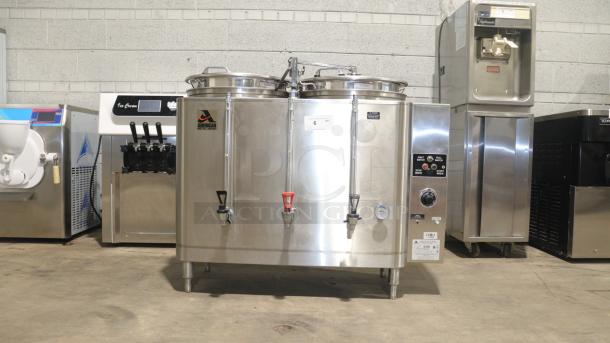
Operational planning: If morning rush hits at 7am and you need 6 gallons ready, start brewing at 6:40am. If you're serving continuously and need replacement coffee, you need either multiple brew towers or a system where one dispenser serves while its replacement is brewing. This is why convenience stores often run multiple smaller dispensers rather than one large unit—continuous availability without gaps.
Volume Tiers by Operation Type
Small office or church basement: Single-pot or dual-pot system with 12-cup batch capacity. Low volume, infrequent refills, pour-over systems acceptable if no plumbing access. Budget for 20-50 cups daily.
Medium café or hotel breakfast: Multi-pot system or dispenser array. Need 100-300 cups daily with morning rush concentration. Multiple brew heads prevent bottlenecks. Staff can brew continuously during peak without falling behind.
High-volume convenience store or hospital: Large dispenser systems or extensive airpot arrays. Serving 500+ cups daily with sustained demand. Multiple varieties required. System must support continuous brewing and serving simultaneously. Redundancy critical—equipment failure can't shut down service.
The Variety Question
Minimum viable variety: four options (regular, decaf, two flavored—typically hazelnut and vanilla). This covers 90% of customer preferences. Higher-traffic locations in competitive markets may justify 10+ varieties. The decision isn't "do we need variety" but "does our market support the additional equipment and operational complexity?"
Equipment implication: Four varieties means four brewing/serving stations. This can be four dispensers, four airpots, or four pots on warmers. Physical footprint matters. Dispenser arrays are compact. Airpot systems are flexible. Multi-pot warmers require counter space but maximize visibility.
Water Line Installation: Demystifying the Plumbing
The water line hookup intimidates buyers more than it should. Commercial coffee equipment requires consistent water supply, but the installation isn't complex plumbing—it's compression fittings and flexible tubing available at any hardware store. A moderately handy operator can handle installation in an afternoon.
Hard-Plumbed vs Pour-Over Decision
Pour-over systems (manual water filling) work for low-volume applications: offices brewing 2-3 pots daily, church basements with weekend-only service, backup systems for locations with hard-plumbed primary equipment. If you're brewing more than 5-6 pots daily, manual filling becomes operational friction.
Hard-plumbed systems connect directly to building water supply via flexible tubing and compression fittings. No manual filling required—the brewer draws water automatically when initiated. For any commercial operation serving customers, hard-plumbing is the correct choice. The installation isn't difficult, it just requires following the process.

Installation Process Overview
Locate cold water supply line (usually under sink or in back-of-house area). Install T-fitting or saddle valve to create tap point. Run flexible tubing from tap point to brewer (food-grade tubing rated for hot water). Connect to brewer inlet using compression fitting (hand-tightening plus wrench-snug, no soldering). Install inline shutoff valve for maintenance access. Test for leaks.
The fittings and tubing cost $30-$75 depending on run length. Installation time is 1-3 hours for first-time installers. Once you've done it once, subsequent installations take 30 minutes. The intimidation factor is higher than the actual difficulty.
Filtration Considerations
Water filtration protects equipment and improves coffee quality. Hard water (high mineral content) causes calcium buildup in heating elements, water lines, and spray heads. Scale accumulation reduces efficiency and eventually causes failure. Filtration systems remove minerals before they enter the brewer.
A quality inline water filter costs $50-$200 depending on capacity. Filter cartridge replacement is typically every 6-12 months depending on water hardness and volume. This is preventive maintenance that extends equipment life from 5 years to 15 years. The math strongly favors filtration installation during initial setup.
Brand Landscape and Market Realities
Bunn dominates commercial coffee brewing the way Turbochef dominates rapid-cook ovens—not because competitors are inferior, but because market penetration creates self-reinforcing advantages. More Bunn units in service means more technicians trained on Bunn equipment, more parts warehouses stocking Bunn components, and more operators comfortable with Bunn systems.
Why Bunn Is Everywhere
Bunn represents 38% of auction volume (199 of 520 sales) because they represent similar market share in new installations. Chain operators like Sheetz negotiate service contracts that include equipment supply—when a new location opens, Bunn brewers are specified by default. This creates familiarity across the workforce and simplifies training. Parts availability is nationwide and immediate. Service technicians know Bunn systems without consulting manuals.
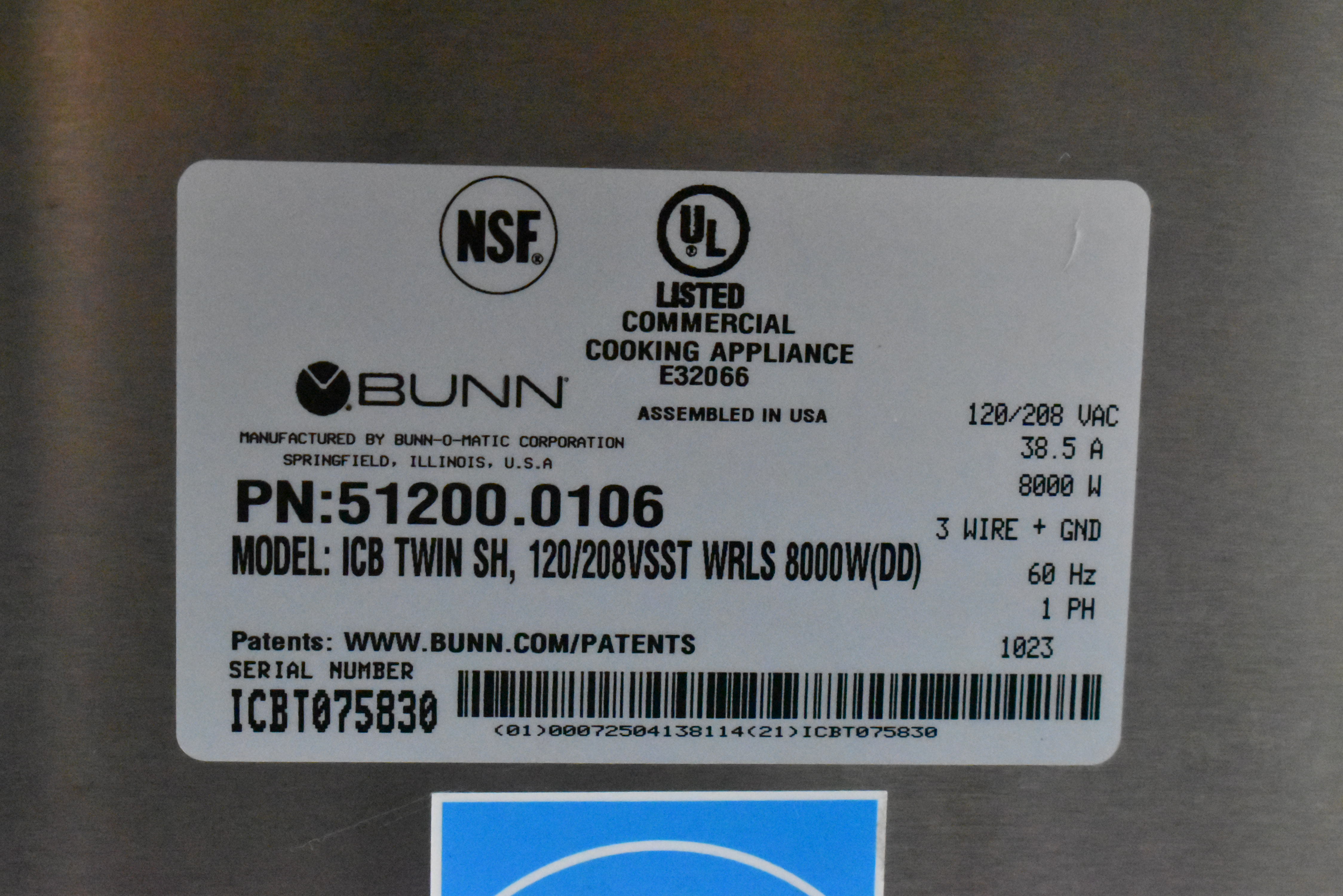
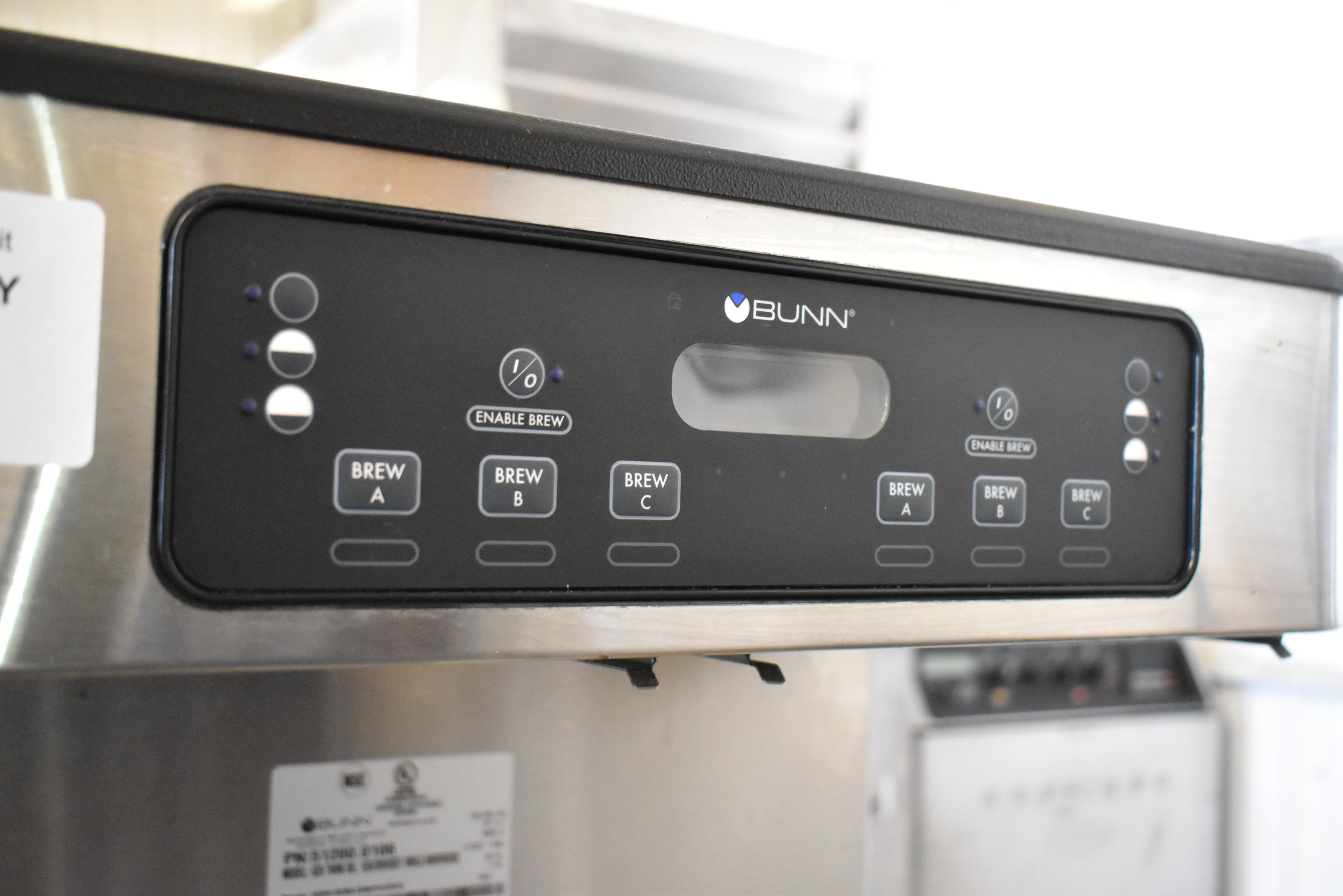
For auction buyers, Bunn's ubiquity means you're buying into an ecosystem. Replacement parts ship same-day from multiple suppliers. Local restaurant equipment repair shops stock common Bunn components. Online resources include detailed service manuals and troubleshooting guides. This isn't brand loyalty—it's operational pragmatism.
Fetco and Curtis as Quality Alternatives
Fetco (52 auction units, 10% of market) and Curtis (54 units, 10% of market) produce equivalent quality equipment at similar auction price points. The difference isn't performance—it's market penetration. A Fetco brewer at $75 delivers the same function as a Bunn at $80. The operational question is whether your area has Fetco-trained technicians and whether local suppliers stock Fetco parts.
In auction settings, brand matters less than system type and condition. Focus on matching the brew-to-serve system to your operation first, then select from available brands based on cosmetic condition and completeness. Clean Fetco units outperform rough Bunn units regardless of brand recognition.
Application-Based Equipment Tiers
Commercial coffee equipment tiers by application rather than features. All major brands produce single-pot brewers, multi-head systems, dispenser models, and airpot stations. The hierarchy is based on matching equipment to operational demands: a single-head pour-over for an office kitchen, a dual-head dispenser system for a gas station, a six-head airpot array for a hotel conference center.
Model numbers within brands indicate capacity and features: dual vs single brew head, number of warming plates, dispenser size, airpot compatibility. These specifications matter more than brand selection. Verify what you're bidding on matches your operational needs before worrying about whether it says Bunn, Fetco, or Curtis on the nameplate.
Auction Market Analysis and Pricing Reality
Analysis of 520 commercial coffee brewer sales reveals a commodity equipment market with dramatic price compression. Median auction price of $50.50 versus retail pricing of $300-$2,000 reflects both market oversupply and immediate availability advantage over backordered new equipment.
Auction Price Distribution
- Under $25: 33% (accessories, residential units, incomplete systems)
- $25-$100: 32% (used commercial brewers, bulk of functional equipment)
- $100-$300: 20% (higher-capacity systems, cleaner condition, recent models)
- $300-$750: 12% (multi-head commercial systems, dispenser arrays)
- Over $750: 3% (new scratch-dent units, large-capacity systems)
Understanding the Value Proposition
The auction advantage isn't about finding broken equipment cheap—commercial coffee brewers are remarkably reliable with proper maintenance. Properly maintained units deliver 5-15 years of service. The value proposition is immediate availability at fraction of retail cost.
New commercial coffee systems face minimum 2-week delivery for in-stock items, often extending to months for backordered models. Auction equipment is available for pickup the day after auction closes. For an operator opening a new location or replacing failed equipment, the time value often exceeds the price savings.
Commercial vs Residential Identification
Auction descriptions mix commercial and residential equipment. Learning to distinguish them prevents buying inappropriate equipment. Commercial units feature stainless steel construction, NSF certification marks, hard-plumb water connections, and significantly larger brew capacity. Residential machines are plastic-bodied, counter-fed water only, and typically brew 12 cups maximum.
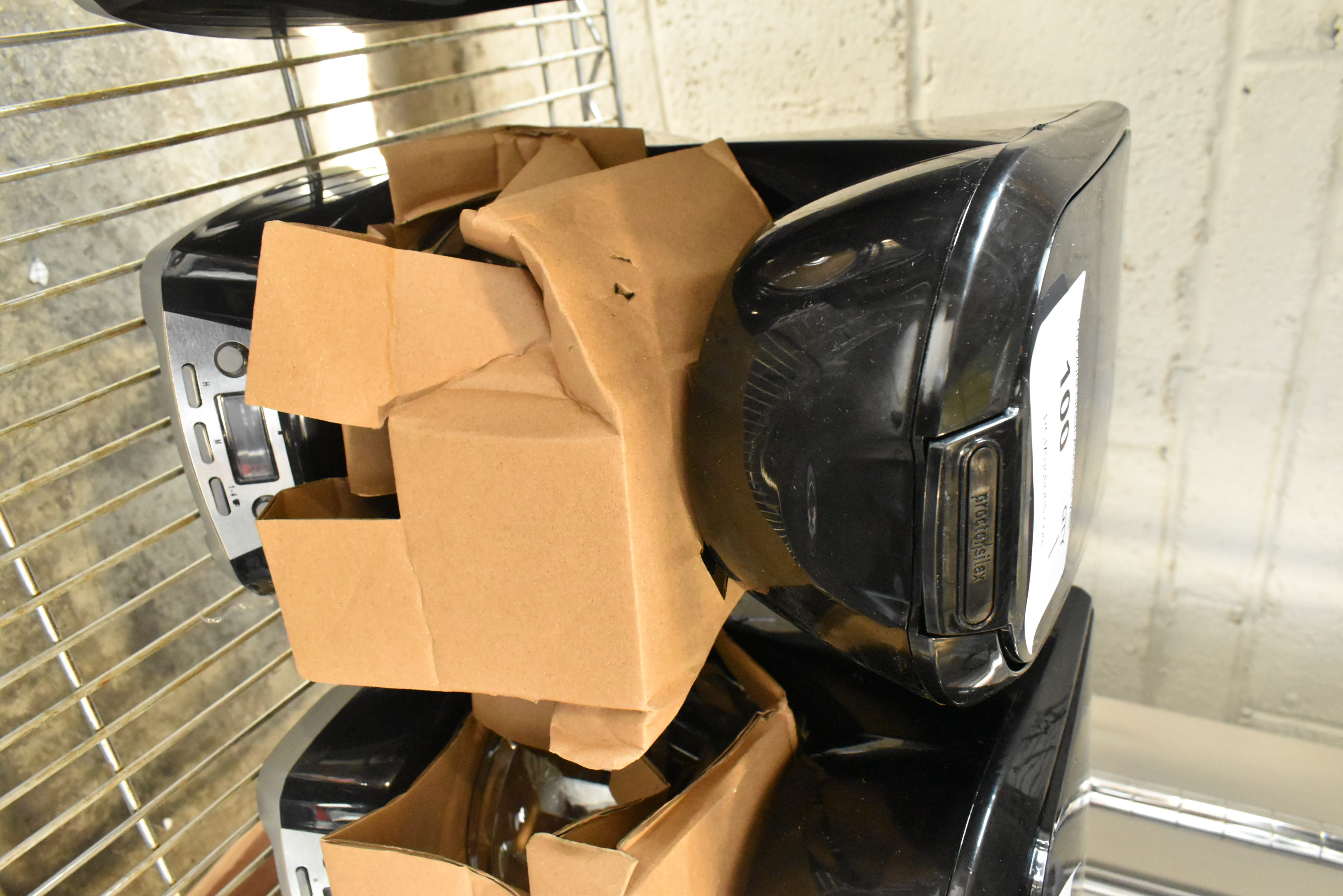
Visual identification: Commercial units are heavy (30-60+ pounds), have visible plumbing connections, use industrial-grade components, and feature brew capacity measured in gallons rather than cups. If it looks like it belongs in a home kitchen, it's not commercial equipment regardless of description.
Volume Advantage for Buyers
PCI Auctions moves 520+ coffee brewing systems annually. This volume creates strategic advantages for buyers: multiple units available in single auction allows capacity planning and variety deployment in one purchase, redundancy becomes affordable when buying multiple units at $50-$150 each, and different system types available simultaneously means matching equipment to multiple locations or applications.
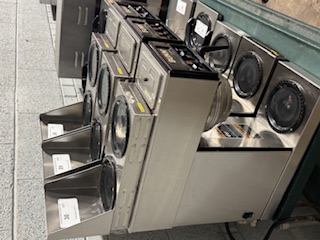
The coffee equipment market at auction is buyer-friendly. Competition exists but supply consistently exceeds demand. Patient buyers targeting functional equipment in acceptable cosmetic condition rarely pay more than $100-$200 for commercial-grade systems that retail $800-$1,500.
Electrical Requirements and Installation Reality
Commercial coffee brewing systems draw significant power. While many smaller units operate on standard 115V household circuits, larger systems and multi-head configurations frequently require 208V single-phase power. This isn't a minor detail—it's a deployment requirement that must be verified before bidding.
Voltage Verification Critical
Every auction listing includes electrical specifications on the model plate or in item description. Read these specifications before bidding. A 208V unit purchased for a location with only 115V service requires expensive electrical work to deploy. The auction price savings disappear into electrician bills.
Standard residential/light commercial: 115V, 15-20 amp circuits. Suitable for single-pot brewers and smaller systems. Most locations have this power available.
Commercial/industrial standard: 208V single-phase, 20-30 amp dedicated circuits. Required for multi-head systems, large dispensers, and high-capacity brewers. Restaurants, hotels, and commercial kitchens typically have this infrastructure. Verify before assuming availability.
Circuit Requirements
Commercial coffee equipment should operate on dedicated circuits—no other equipment sharing the breaker. Coffee brewers draw sustained amperage during heating cycles. Shared circuits create nuisance tripping and potential safety issues. Dedicated circuits prevent operational interruptions and meet code requirements in most jurisdictions.
For locations without existing dedicated circuits, budget $200-$500 for electrician to run new circuit from panel to equipment location. This is one-time cost that enables proper operation. Attempting to operate commercial brewers on shared residential circuits creates reliability problems that exceed installation cost.
Operational Realities and Maintenance
Commercial coffee brewing equipment is refreshingly simple compared to espresso machines or rapid-cook ovens. The failure points are predictable, the maintenance is straightforward, and the longevity is excellent with basic care. This reliability explains the low auction prices—buyers know they're unlikely to purchase catastrophic failures.
Common Failure Points
Warming plate elements: These run continuously when pots are in service. Elements eventually fail from thermal cycling. Replacement is simple—remove screws, disconnect wires, install new element. Parts cost $20-$40. Labor is 15 minutes for someone comfortable with basic electrical work.
Scale buildup in heating elements and water lines: Hard water deposits calcium and minerals inside the system. This reduces efficiency and eventually blocks water flow. Prevention is vastly easier than cure—install inline filtration during initial setup. Treatment is descaling solution run through the system, following manufacturer procedures.
Spray head clogs: Coffee oils and mineral deposits can clog the shower head that distributes water over grounds. Symptom is weak or uneven brewing. Fix is removing spray head and soaking in descaling solution or vinegar. This is routine maintenance, not equipment failure.
Thermostat failure: Controls water temperature during brewing. Failure symptoms include brewing too hot (burned coffee) or too cool (weak extraction). Replacement requires accessing control panel and swapping thermostat. Parts cost $30-$60. This is less common than other failures but does occur after years of service.
The Descaling Reality
Regular descaling extends equipment life more than any other maintenance. Scale buildup is invisible until it causes problems. By the time symptoms appear (slow brewing, weak coffee, unusual noises), significant damage may have occurred. Preventive descaling every 3-6 months depending on water hardness is operational best practice.
Descaling procedure: Use commercial descaling solution (not vinegar for commercial equipment—the chemistry is different). Run solution through system according to manufacturer instructions. Flush thoroughly with clean water before resuming service. Time investment is 30 minutes. Cost is $10-$20 for descaling solution. This simple procedure can prevent $200-$500 in repair costs.
Realistic Service Life
Properly maintained commercial coffee brewers deliver 5-15 years of service. The variance depends on water quality, maintenance consistency, and operational volume. A Bunn brewer in a small office with filtered water and quarterly descaling can run 15+ years. The same unit in a high-volume location with hard water and no maintenance may fail in 3-5 years.
For auction purchases at $50-$150, even 3-5 years of service represents extraordinary value. If you implement basic maintenance (filtration and descaling), 10+ year service life is achievable. At these price points, buying multiple units for redundancy costs less than single new unit with warranty.
Deployment Strategy and Smart Buying
The coffee brewer auction market rewards strategic thinking more than aggressive bidding. With 520+ units available annually and median prices around $50, supply consistently exceeds demand. Smart buyers focus on matching equipment to needs rather than winning individual auctions.
Multi-Unit Strategy
Buying multiple units in single auction makes operational sense. Primary equipment for main service area, backup unit for equipment redundancy, and additional units for variety deployment costs $150-$300 total. This provides flexibility impossible to achieve economically with new equipment. When primary unit needs descaling or service, swap in backup unit without service interruption.
For multi-location operators, auction purchasing enables standardization at minimal cost. Buy same model for all locations, simplify training and maintenance, stock common spare parts, and achieve operational consistency. Three identical Bunn brewers at $75 each ($225 total) deliver more value than one new unit at $800.
Condition Assessment During Preview
Physical inspection during preview reveals key information. Check for: stainless steel body condition (dents and corrosion indicate rough handling), completeness of brew head assembly and spray mechanism, visible scale buildup on accessible components, power cord condition and proper termination, and presence of model plate with specifications.
Commercial coffee brewers rarely hide catastrophic failures. If it looks complete and reasonably clean, functionality probability is high. Units with missing components, significant corrosion, or obvious damage should be avoided unless intended for parts use. At median $50 pricing, targeting clean complete units costs marginally more but eliminates repair uncertainty.
The Immediate Availability Advantage
New commercial coffee equipment faces 2-week minimum delivery for in-stock items, extending to months for backordered models. Auction equipment is available for pickup the day after auction closes. For operators facing: new location opening with scheduled launch date, failed equipment requiring immediate replacement, seasonal demand requiring rapid capacity expansion, or unexpected volume increase needing quick scaling—the time value of immediate availability often exceeds the absolute price savings.
A $75 auction brewer delivered tomorrow solves operational problems that a $800 new unit arriving in 6 weeks cannot address. The deployment timeline advantage is real and measurable in prevented revenue loss.
Accessory Equipment and Complete System Building
Coffee brewing systems require supporting equipment beyond the brewer itself. Dispensers, airpots, decanters, warming plates, and urn stands all appear regularly in auction. Building complete operational systems from auction sources is economically viable and operationally advantageous.
Dispenser and Airpot Economics
Insulated dispensers retail $80-$200 depending on capacity. Auction pricing runs $15-$50 for equivalent units. Airpots retail $40-$80, auction for $8-$20. When deploying satellite or dispenser systems requiring multiple containers, auction savings multiply significantly. Six airpots at auction ($60-$120 total) versus retail ($240-$480) fund the brewer purchase.
Replacement economics favor auction purchasing even for existing operations. Dispensers and airpots wear out—gaskets fail, pump mechanisms break, thermal insulation degrades. At retail prices, replacement is expensive. At auction prices, replacement becomes routine maintenance rather than capital expenditure.
Building Redundancy into Operations
Restaurant equipment reliability depends on redundancy. Single-point failures shut down service. Auction economics enable redundancy previously limited to larger operations. For total investment of $200-$300, operators can deploy: primary brew system, backup brewer for maintenance coverage, extra dispensers or airpots for variety, and spare parts inventory from incomplete units purchased as parts sources.
This level of operational security is impossible at retail pricing. A single new commercial brewer costs more than complete redundant auction system. The risk mitigation value exceeds the equipment cost.
Final Assessment
Commercial coffee brewing equipment represents one of the most buyer-friendly categories in restaurant equipment auctions. The combination of high reliability, low auction prices, immediate availability, and operational simplicity creates opportunity for informed buyers. Unlike complex equipment requiring specialized knowledge to avoid expensive mistakes, coffee brewers reward basic operational understanding more than technical expertise.
The critical success factor isn't identifying the perfect unit—it's matching system type to operational needs. Understanding whether you need direct-to-pot brewing, dispenser systems, or satellite/airpot arrays based on your serving volume, variety requirements, and staff workflow determines long-term operational success. At median auction prices around $50, even mistakes are affordable learning opportunities rather than business-threatening losses.
Bunn's market dominance creates parts availability and service advantages worth considering, but Fetco and Curtis deliver equivalent functionality at similar auction prices. Brand loyalty matters less than system appropriateness and cosmetic condition. A clean Curtis dispenser at $60 outperforms a rough Bunn unit at $80 regardless of brand recognition.
The auction value proposition extends beyond purchase price. Immediate availability versus weeks of backorder wait time provides operational flexibility impossible to achieve through traditional purchasing. Multiple unit acquisition enables variety deployment and redundancy at costs lower than single new unit. Strategic buyers leverage auction volume to build complete operational systems rather than individual equipment purchases.
Focus on electrical specification verification (208V versus 115V), water line installation planning (hard-plumb versus pour-over), capacity matching (batch size and brew time versus serving demand), and system type selection (pots, dispensers, airpots). These operational fundamentals determine success more than brand selection or aggressive bidding.
With proper water filtration and routine descaling maintenance, commercial coffee brewers deliver 10-15 years of reliable service. At auction prices of $50-$150, even conservative 5-year service life represents extraordinary value. The equipment category is forgiving, the reliability is high, and the operational simplicity makes commercial coffee brewing one of the safest auction categories for inexperienced buyers.
Ready to Bid on Commercial Equipment?
PCI Auctions offers 600-900 lots weekly of restaurant and foodservice equipment.
Preview in person, inspect before bidding, and leverage auction pricing for your operation.
View Current Auctions